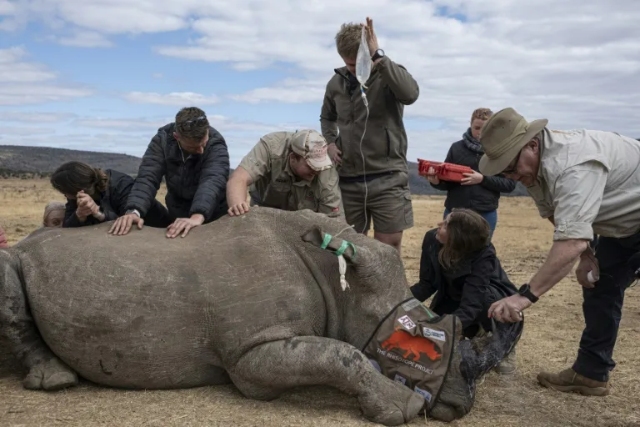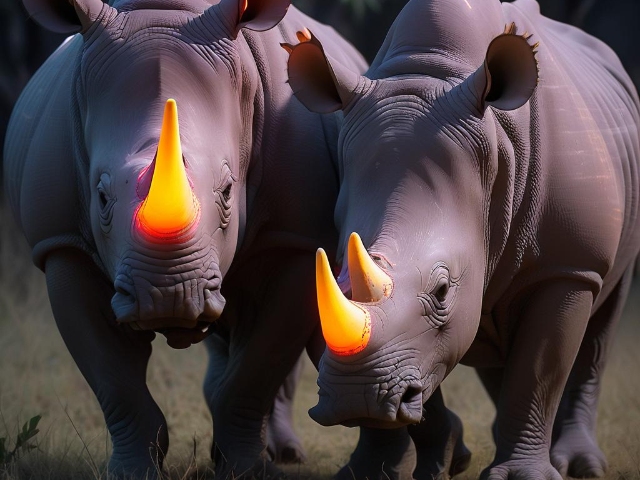[imagesource:gencraft/ai]
In a pioneering project aimed at curbing poaching, South African scientists have injected radioactive material into live rhino horns to make them easier to detect at border posts.
The idea is that radiation detectors already in place at national borders would detect the horns and help authorities arrest poachers and traffickers as they move the animals through.
The country has most of the world’s rhinos, making it a prime target for poachers. This is because there’s a high demand for rhino horns in Asia, where they’re used in traditional medicine for their supposed health benefits. The prices of rhino horns often rival that of gold and cocaine.
The research involves veterinarians and nuclear experts and begins by tranquilising the animal before drilling a hole in its horn to insert the nuclear material carefully, AP News reports.
Last week, the researchers at the University of the Witwatersrand‘s Radiation and Health Physics Unit in South Africa injected 20 live rhinos with these nuclear isotopes and hope the process can be replicated to save other wild species vulnerable to poaching — like elephants and pangolins.
“We are doing this because it makes it significantly easier to intercept these horns as they are being trafficked over international borders, because there is a global network of radiation monitors that have been designed to prevent nuclear terrorism,” said Professor James Larkin, who heads the project. “And we’re piggybacking on the back of that.”
According to the International Union for Conservation of Nature, there were about 500,000 rhinos worldwide at the start of the 20th century. Now, due to ongoing demand for rhino horns on the black market, that number has dropped to around 27,000.
South Africa has an estimated 16,000, with over 500 rhinos killed yearly, mostly in state-run parks.
“We’ve got to do something new and something different to reduce poaching. You know, you’ll see the figures they’ve already started going up,” said Larkin. “During Covid, they all went down but post Covid we are now starting to see those numbers go up again.”
Besides the radioisotope chips in the horn making it easier to detect when the animal is snuck across the border, the radioactive material also renders the horn “useless… essentially poisonous for human consumption” added Nithaya Chetty, professor and dean of science at the same university.
And don’t worry, the radioactive material’s dose is so low it won’t impact the animal’s health or the environment in any way.

The idea has received support from some in the industry, but the researchers have also had to jump many ethical hurdles posed by critics of their methodology.
Pelham Jones, chairperson of the Private Rhino Owners Association, is among the critics of the proposed method and doubts that it would effectively deter poachers and traffickers.
“(Poachers) have worked out other ways of moving rhino horn out of the country, out of the continent or off the continent, not through traditional border crossings,” he said. “They bypass the border crossings because they know that is the area of the highest risk of confiscation or interception.”
But this is the best idea researchers have had, besides dehorning or just poisoning horns, which has not really worked in the past.
[source:apnews]





